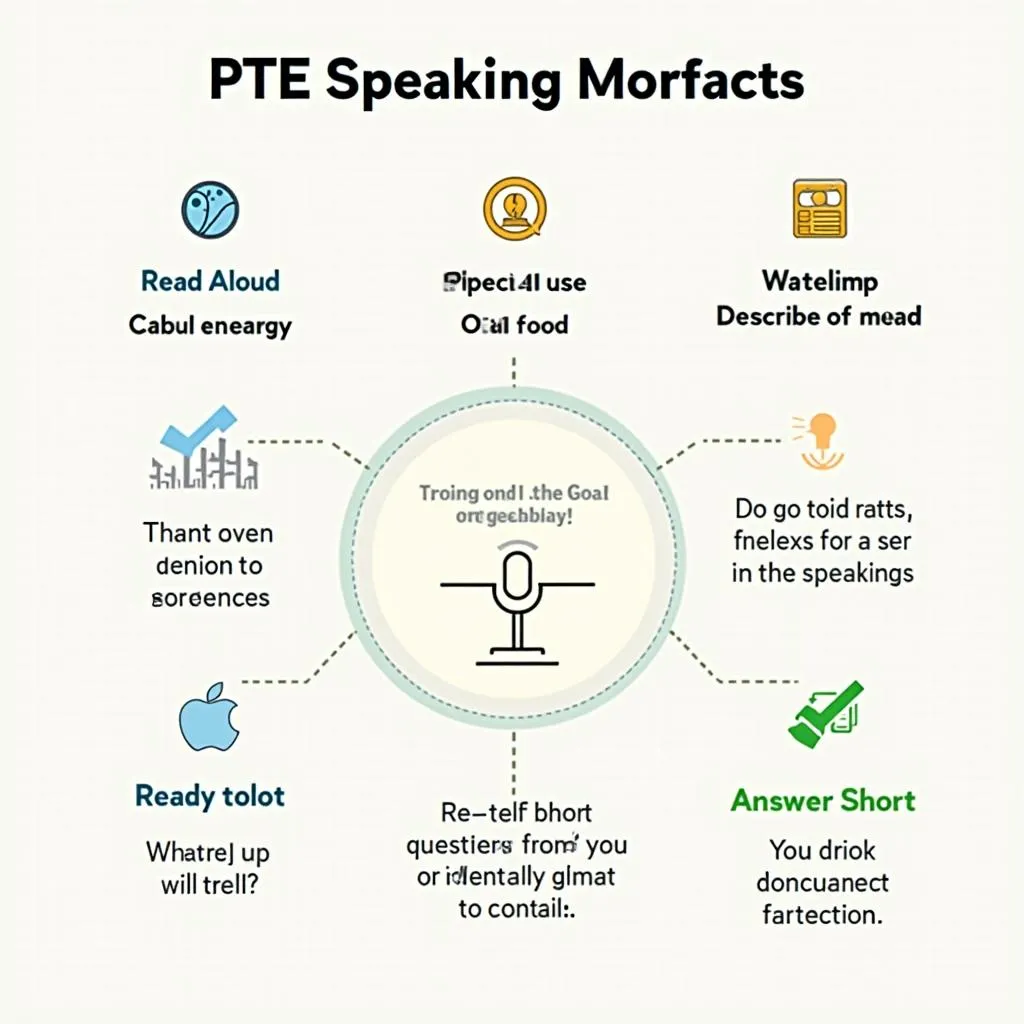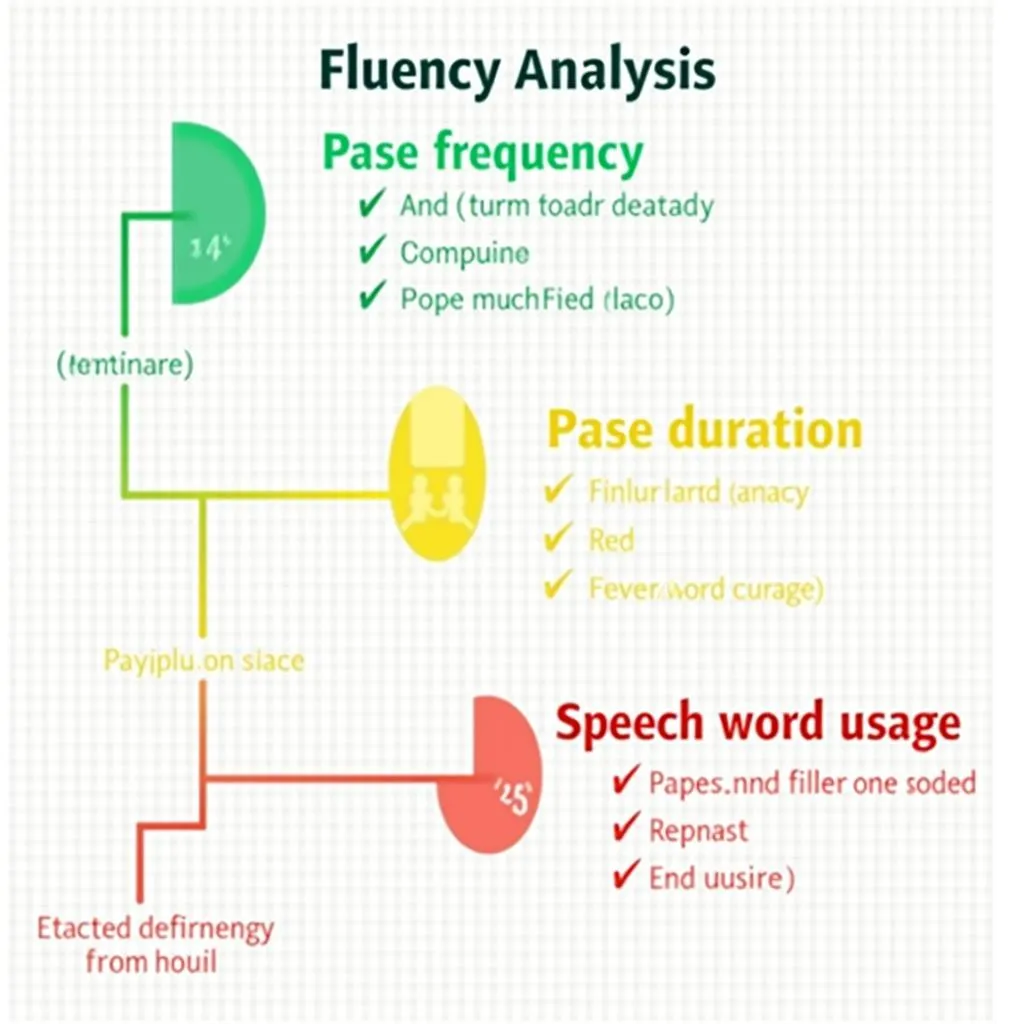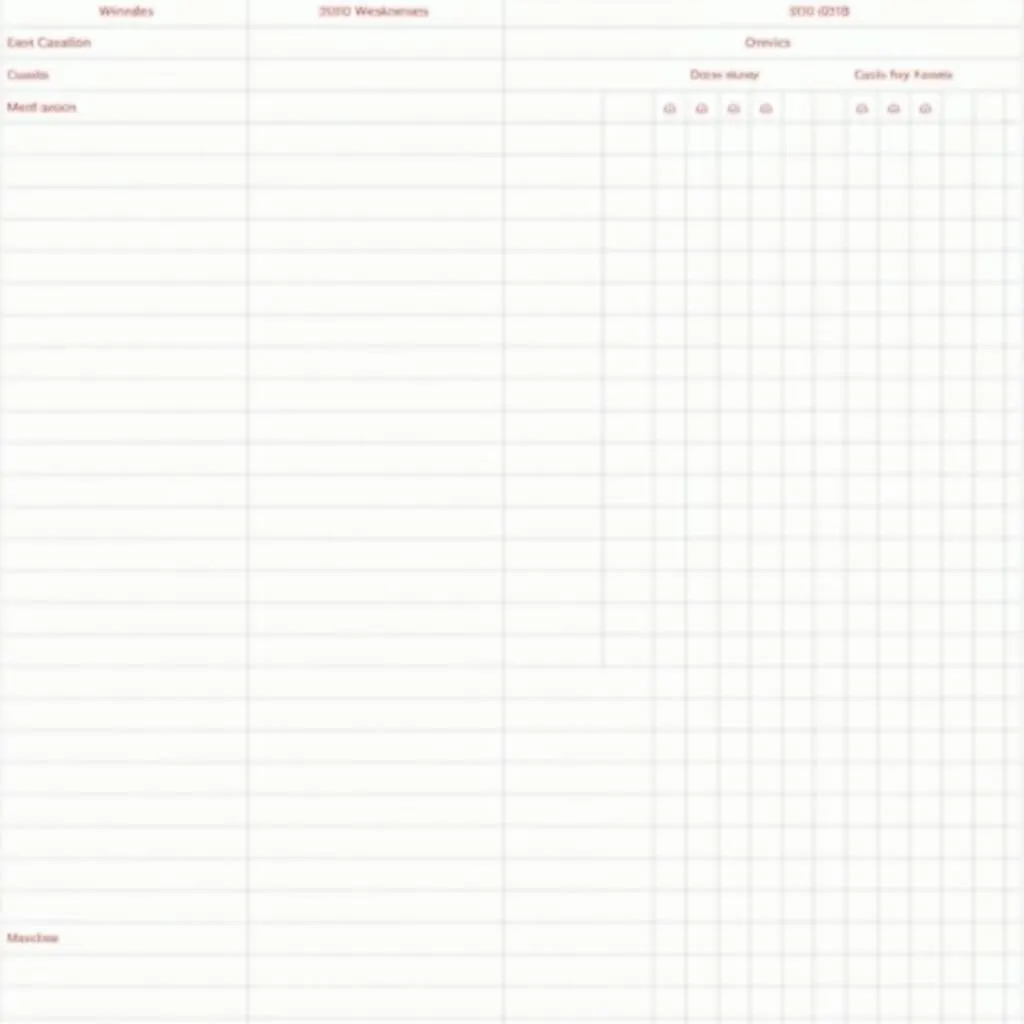Analyzing your performance in the PTE Speaking section is crucial for improving your score and achieving your desired results. By understanding your strengths and weaknesses, you can focus your practice efforts more effectively. This comprehensive guide will walk you through the process of evaluating your speaking performance, providing expert insights and practical strategies to enhance your skills.
Understanding the PTE Speaking Section
Before diving into analysis techniques, it’s essential to have a clear understanding of what the PTE Speaking section entails. This part of the test assesses your ability to speak English in an academic environment.
Key Components of PTE Speaking
- Read Aloud
- Repeat Sentence
- Describe Image
- Re-tell Lecture
- Answer Short Question
Each of these tasks evaluates different aspects of your speaking skills, including pronunciation, fluency, and content.
 Key components of PTE Speaking section
Key components of PTE Speaking section
Recording Your Practice Sessions
The first step in analyzing your performance is to record your practice sessions. This allows you to listen to yourself objectively and identify areas for improvement.
Tools for Recording
- Smartphone voice recorder apps
- Computer microphone and recording software
- PTE practice platforms with built-in recording features
PTE speaking section sample practice materials can be invaluable for simulating real test conditions during your recording sessions.
Evaluating Your Pronunciation
Pronunciation is a critical factor in the PTE Speaking section. Here’s how to analyze this aspect of your performance:
- Listen for clear articulation of individual sounds
- Check for proper stress on syllables and words
- Assess your intonation patterns
- Identify any recurring pronunciation errors
Dr. Emma Thompson, a renowned PTE speaking coach, advises, “Focus on the sounds that are most challenging for speakers of your native language. Often, these are the areas where significant improvements can be made.”
Assessing Your Fluency
Fluency refers to the smoothness and naturalness of your speech. To analyze your fluency:
- Count the number of pauses and hesitations
- Measure the length of your pauses
- Evaluate the pace of your speech
- Check for use of filler words (e.g., “um,” “uh”)
 Fluency analysis chart for PTE Speaking
Fluency analysis chart for PTE Speaking
Content Analysis
The content of your responses is equally important. Here’s how to evaluate it:
- Check for relevance to the question or task
- Assess the coherence and logical flow of ideas
- Evaluate the use of appropriate vocabulary
- Examine the complexity and variety of sentence structures
“Content accuracy is paramount,” says PTE expert John Davis. “Ensure that you’re not just speaking fluently, but also conveying the correct information.”
Using AI-Powered Tools
Modern technology offers advanced tools for analyzing your PTE speaking performance. AI-powered platforms can provide detailed feedback on various aspects of your speech.
Benefits of AI Analysis
- Objective scoring based on PTE criteria
- Instant feedback on pronunciation and fluency
- Detailed reports highlighting areas for improvement
- Personalized practice recommendations
While these tools are valuable, they should complement, not replace, human feedback and self-analysis.
How to get feedback on PTE speaking offers additional insights into leveraging various feedback sources for improvement.
Comparing Your Performance to PTE Standards
To truly understand where you stand, it’s essential to compare your performance to PTE scoring criteria:
- Review the official PTE Speaking scoring guide
- Analyze sample responses at different score levels
- Identify the gaps between your performance and the target score
PTE practice test scoring guide can provide valuable insights into how your responses would be evaluated in the actual test.
Creating a Personalized Improvement Plan
Based on your analysis, develop a targeted improvement plan:
- Prioritize areas needing the most improvement
- Set specific, measurable goals for each aspect of speaking
- Allocate practice time according to your priorities
- Regularly reassess your progress and adjust your plan
Remember, improvement in speaking skills takes time and consistent effort. Be patient with yourself and celebrate small victories along the way.
 Personalized PTE Speaking improvement plan template
Personalized PTE Speaking improvement plan template
Common Pitfalls to Avoid
When analyzing your PTE speaking performance, be aware of these common mistakes:
- Being overly critical of your accent
- Focusing solely on fluency at the expense of content
- Neglecting to practice all types of speaking tasks
- Ignoring the importance of time management in your responses
PTE common mistakes to avoid provides more insights into pitfalls that can hinder your progress.
Final Thoughts on Performance Analysis
Analyzing your performance in PTE Speaking is an ongoing process that requires dedication and objectivity. By regularly recording, evaluating, and refining your speaking skills, you’ll be well-prepared for success in the PTE Academic test.
Remember, the goal is not perfection, but consistent improvement. As you continue to analyze and enhance your performance, you’ll build the confidence needed to excel in the speaking section and achieve your desired PTE score.
PTE exam tips for last-minute preparation can provide additional strategies to refine your skills as your test date approaches.
FAQs About Analyzing PTE Speaking Performance
-
How often should I analyze my PTE speaking performance?
It’s recommended to analyze your performance after each practice session, with a more comprehensive review weekly. -
Can I improve my PTE speaking score through self-analysis alone?
While self-analysis is valuable, combining it with feedback from tutors or AI tools often leads to more significant improvements. -
What’s the best way to track progress in PTE speaking over time?
Keep a log of your scores and feedback for each speaking task, noting areas of improvement and persistent challenges. -
How can I simulate real PTE test conditions when practicing speaking?
Use official PTE practice materials, adhere to time limits, and practice in a quiet environment with a good-quality microphone. -
Is it normal to feel discouraged when analyzing my speaking performance?
Yes, it’s common to feel this way initially. Focus on progress rather than perfection, and remember that improvement takes time. -
How do I know if I’m ready for the actual PTE speaking test?
When your practice scores consistently meet or exceed your target score, and you feel confident in all speaking tasks, you’re likely ready for the test.